Positioning Your Product as the Answer to the Consumer

Marketing is more than just advertising. It's about selling people the opportunity for a better way of life, but also about understanding your consumer. At day end, if you don't understand the customer's needs, then what goes around comes around in a business meeting; you'll be explaining layoffs to your shareholders. Remember that positioning your product as the answer to the consumer is the best approach to stand out in the competition!
We all know that marketing is a complicated thing, but if you're going to get anywhere in this business world, you must learn how to do it efficiently. Not only that, but you will also have to learn how to market your product to stand out from the competition and is seen as the clear solution to everybody's problems.
Knowing what a product does is one thing but knowing how it fits consumers' minds is another thing. This understanding is known as understanding the product's niche in the market. Product positioning requires that a business determine how its product can be differentiated from other similar products of its genre and different from competitors' products.
Importance of product positioning
The importance of product positioning is significant as it primarily determines the success of a product. To attract prospective customers, companies need to grasp their target market and their needs.
When they have the right product positioning in mind, they can figure out how to make it work successfully. A company's potential financial success depends significantly on identifying people's issues and concerns with its products or services.
A company's products may be different from other competitors' products. However, they can still be very similar, and it may not necessarily be a good move to change the market you are targeting. That's why it is essential to have a clear picture of your target market in mind. We will explore techniques for positioning your product as the answer to the consumer.
4 Characteristics for Successful Product Positioning
Product positioning may be the first thing a company addresses, but it can also be the last. While an effective product strategy may lead to a successful business, poor product positioning can lead to bankruptcy. Four characteristics are needed for a successful business: differentiation, value proposition, uniqueness, and branding.
Differentiation
Product differentiation refers to the degree that a product can be differentiated from other competitors. A company's goal is to differentiate its product from other similar products in the market. This can be done through both functional and non-functional features. The functional features of a product deal directly with the physical needs of consumers. These features include weight, size, durability, color, and design. Non-functional features do not relate directly to the physical needs of consumers. Examples of non-functional features include functionality, price, and brand image.
Value Proposition
The value proposition is the benefit a product brings to consumers based on the features and benefits it has to offer. It promises that the product will fulfill one or more needs, preferences, or desires that consumers may have. Two factors affect a company's ability to communicate the value proposition successfully: its positioning and its uniqueness in the market. A company's positioning concerning competitors can be differentiated from them or similar to them. By separating the product into various competitive categories, a company can communicate its value proposition more effectively. The uniqueness of a product has a direct relationship to its value proposition.
Uniqueness
The third characteristic of success is uniqueness. A company's ability to differentiate itself from others in its category will be influenced by its uniqueness in the market. A company's uniqueness mixes technological assets, brand recognition, market share, usage share, distribution channels, and patents.
Brand Image
The fourth characteristic of success is a strong brand image. The value of branding can be seen from the perspective of competitive advantage. It creates a competitive advantage through its ability to continuously generate sales and profits for a company over the long term. Branding is an important tool for positioning a product in the minds of consumers. It helps a company better communicate its value proposition to consumers, increases its credibility in the minds of consumers, and may help a company acquire new customers. Branding makes it easier for customers to identify a product with the company that produces it. As such, branding is critical to the overall success of a product.
How do you find out what people want?
The first step to figuring out what people need is to ask yourself: who are you selling your product to? Is it the customer at the checkout counter, or is it the consumer who's looking for a replacement car or a new gadget?
You have to find out what are your customer needs!
Talk to your suppliers.
Suppliers have a unique view of the industry that customers don't get. They see which products sell, which products don't sell, and what people are willing to pay for their products. Sitting down with your suppliers will allow you to learn about the trends in your field and how other companies are solving those problems.
Browse forums and blogs.
Forums and blogs are the digital equivalents of water cooler talk, and they're the best way to find out what people are talking about in your industry. If somebody has a question or a concern, they will post it somewhere on the internet. Find those people and ask them more questions. Find out what their concerns are and how your products might be able to solve those problems.
Watch social media.
You should get one now if you don't already have a Twitter handle or a Facebook page set up for your business. These social media platforms can help you build a better relationship with your customers and keep an eye on what they like and what they don't like. If people talk about the problems they're encountering with your product or the competition, you should pay attention.
It's best to do some combination of all of these things because there's a lot of overlap between them all.
Identifying your customer's needs
Once you know what people want, your next step is to figure out how to make it available. Here are some tried and true methods for figuring out your customer's needs:
- Think about what type of person you're trying to sell your product to. Put yourself in their shoes.
- As you get an idea of your customer's type, think about what their pain points are. What problems might they be facing? Think about the areas of their lives where you could help them out. Then, think about how you can appeal to those pain points.
- If you're having complications in coming up with ideas on your own, try interviewing people in other parts of the company or out in society at large. What problems do they have in their lives? What problems are they facing? If you only focus on one specific issue, you're not going to be able to accommodate everybody. In the end, your product should be able to address all of the problems that go on in everybody's lives.
Acting
Once you know what people want, it's time to figure out how to give it to them. You have to find a way for your company to deliver the product in a way that's convenient for the consumer. It will be going to be different from person to person, but here are some examples of different ways that companies have conducted themselves:
- Sell high-quality products at low prices.
- Capable of being shipped directly to the consumer.
- Provide convenience.
- Be able to solve all the problems a customer might have with their life.
- Be consistent and reliable.
However, you go about it, figure out how you can be seen as the answer to all the problems in your customers' lives. When they think of these problems, they should first think of your product. The more you can position yourself as the solution to all the problems your customer might ever encounter, the better off you'll be.
Steps to Positioning Your Product
When marketing, the goal is to create demand for your product or service. To do this, you need to make consumers aware of your business and see that it provides solutions that meet their needs. If you're not appropriately positioned in the minds of potential customers, they'll never have a reason to explore what you have to offer! Fortunately, we'll teach you how to do just that with these five steps!
Find out who your customers are!
You must determine why your potential customer needs what you have to offer. Once you understand this, you'll know where to spend your marketing budget. Your product or service may have multiple applications to suit a wide range of needs.
Highlight key features and benefits.
Your customers need to know how you're going to help them. State your customer's problem and describe how your product or service will help them solve it. This will be your USP (Unique Selling Proposition).
Identify your target market.
Once you know your product or service, it's important to identify where it can be found. Apart from it, you will have to make sure that your marketing budget is used by an expert in the right way to reach the right people at the right time and space.
Be unique.
You must stand out from your competitors. You're not the only one offering a product or service. How are you different from the rest? What's your USP? Are there any points you can add or subtract from your service to make it more appealing to your target market?
Know the competition and its weaknesses.
Finally, you need to know where you place other businesses in your niche. You can always try to outsell them, but there may be other reasons your customers may choose to go elsewhere.
You'll need to choose which competitors you want to compete with (which will be based on marketing strategies, location, and potential for growth). Then you need to decide what points of difference (perceived weaknesses) you want your product or service to have over the others.
Benefits of Positioning Your Product as the answer to consumer
If you are still trying to sell your product without positioning it as the answer to a consumer need, you might want to take note of these proven benefits:
- Product is seen as more innovative than competitors'
- Increase in market share and brand loyalty
- Reduction in customer acquisition cost (because it's harder for consumers to opt for the status quo)
- Decrease in customer churn rate (because customers feel their needs are being satisfied)
Positions your product as the answer with these 5 ways:
- Ask and answer this question: What problem does my product solve?
- Get to the root of your product's purpose. Answer this question: Why was my product created?
- Identify what you want your user to feel or do by using your product that they cannot get from a competitor's product. For example, if you're selling a weight-loss supplement, tell users it will make them look decent. Likewise, for a video game, tell users it will make them more intelligent.)
- Give your product identity. Create a sound bite that describes your product's answer and use it in your marketing. (For example, if you sell a weight-loss supplement, tell consumers it will make them look sexier.)
- Find the emotion in your product's benefit and make sure to capitalize on it. (For example, tell customers they will look sexier. Do not mention anything about their health or fitness. That will come later. First, you have to get them to buy.)
Parting Words:
This may be a very long and complicated essay in your mind, but you can surely make a beautiful product or service with the help of product positioning. What's important here is that you should focus on people's problems and see how you can help them solve them. If you are successful, they will never stop buying it and thanking you for it. Now, are you ready to make a product positioning strategy for your company? Good luck!
Do you feel like you are struggling with putting "strategy" and "business growth concepts" in place that make a difference? Doing it all is overwhelming! Let’s have a honest discussion about your business and see if the Power of 10 can help you. Click “HERE” to have a great conversation with our team today.
Written and Published By The Strategic Advisor Board Team
C. 2017-2021 Strategic Advisor Board / M&C All Rights Reserved
www.strategicadvisorboard.com / info@strategicadvisorboard.com











